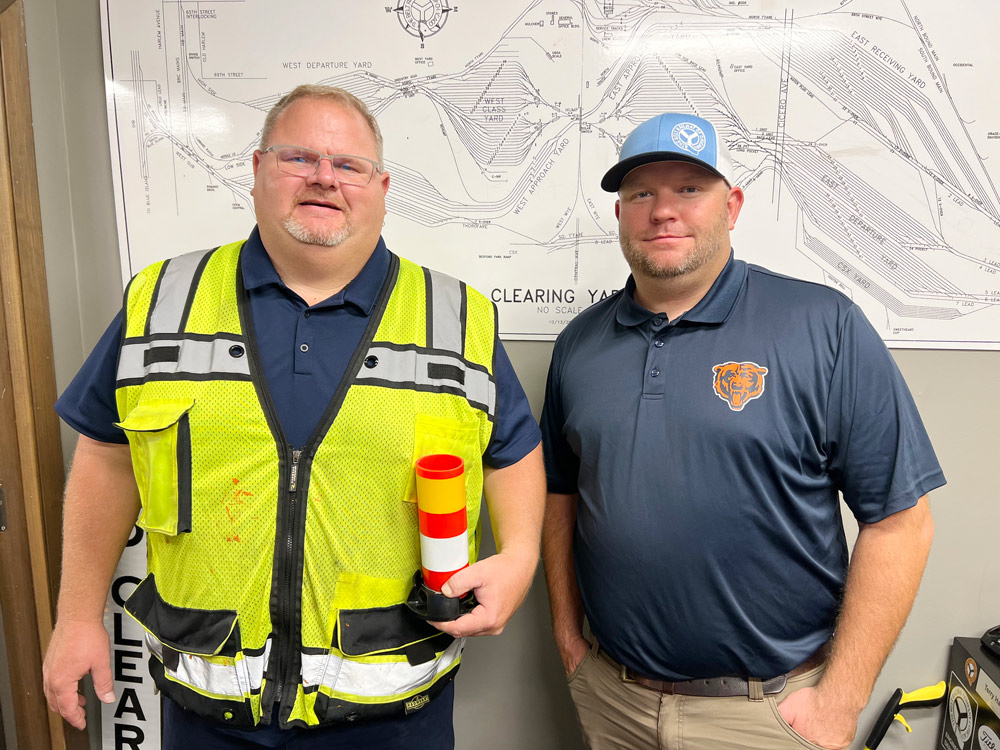While only 8 inches tall, more than 400 clearance markers are making a visible difference within the Belt’s yard.
The project, which was overseen by the Engineering and Safety departments and contributed to by Safety Committee members, stemmed from a visiting crew’s suggestion. The work was performed between September and October.
The high-visibility, reflective tubes were added to the middle of specific ties to help inbound crews, especially those less familiar with the facility, know where to properly leave and cut away trains so traffic on adjacent tracks can safely pass.
Those same ties were cleaned and coated with high-visibility orange paint.
Assistant Director of Safety Mark Labbe said the clearance markers will help make the yard more uniform, creating an experience similar to other railroad locations. He lauds those who dedicated their time to the safety-enhancing effort.

